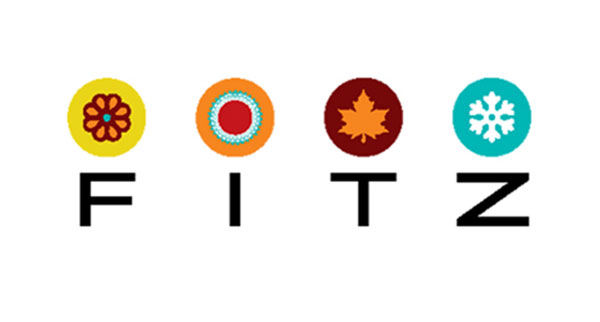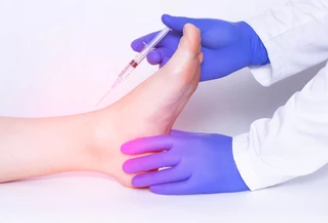Prolotherapy is an injection technique that stimulates the body’s natural healing process in a targeted area to reduce pain and tenderness, rebuild damaged ligaments, tendons and joint injuries. It is one of the most effective and least known treatments for muscle and joint pain.
Prolotherapy is a non-surgical procedure that has been proven effective for more than 75 years and has spared many patients from surgery and shortened the long recovery time for damaged ligaments, tendons and joints. The injections stimulate the body’s natural healing response by causing a temporary, low-grade inflammation at the injection site, activating fibroblast to the area, which in turn synthesize precursors to mature collagen, therefore allowing reinforcement of connective tissue. Treatments can result in less pain, stiffness and improved strength, function and mobility of the area, it can eliminate even chronic longstanding foot, ankle and knee pain.
The injection is made up of 10-20% glucose and local anaesthetic (1-2% xylocaine). Over the course of 4-7 treatment sessions, typically 1-2 weeks apart, the body lays down more collagen at these sites, creating stronger tissues (ligaments and tendons). Most people report a reduction in pain very soon after treatment, however some areas will take longer to notice an improvement in pain.
Are there any risks?
There is always a small risk with any injection therapy (i.e. cortisone, prolotherapy). These could be swelling, bruising, a low risk of infection, an increase in pain in the area or no change at all to the pain/injury.
During the procedure, all equipment used is sterile, the injection area is cleaned, and a no touch aseptic technique is performed
Post Treatment Information
After Prolotherapy treatment it is possible that pain may increase in the treated area for the first 24-48 hours. This is because we’re trying to stimulate inflammation at the site of pain and/or degeneration. Inflammation allows the body to flood an area with healing cells, which helps to clean up the tissue and lay down more collagen.
For this reason, do not take anti-inflammatory medication if it can be avoided (e.g., oral Voltaren or ibuprofen). If you require pain medication, paracetamol is appropriate and applying heat to the area will reduce soreness (e.g., wheat pack). Most people return to activity the next day with no complications.
Prolotherapy injection should be administered one to two weeks apart for 4-7 sessions – depending on how your body responds to treatment. The healing cycle for strained connective tissue is around 6 weeks.
Prolotherapy is fast becoming a popular choice for those with foot issues. Those that have experienced success from this treatment have noted a variety of positive changes, which include:
- Improved function of their foot or feet, some of which may be attributed to improved mobility by enabling a greater ability to move independently and without pain.
- Decreased pain.
- A reduction in swelling through the elimination or a significant reduction in the collection of watery fluid in tendons, which means a reduction in swelling.
- Connective tissue improvements and joint stability due to the architecture of collagen in tendons.
If you have tried everything with no success, be it your toes, feet, ankles, knees or random nerve pain down your legs that has yet to be resolved, this treatment may be for you. Call us today on 9568 4573 or book online to return to a pain-free life.







